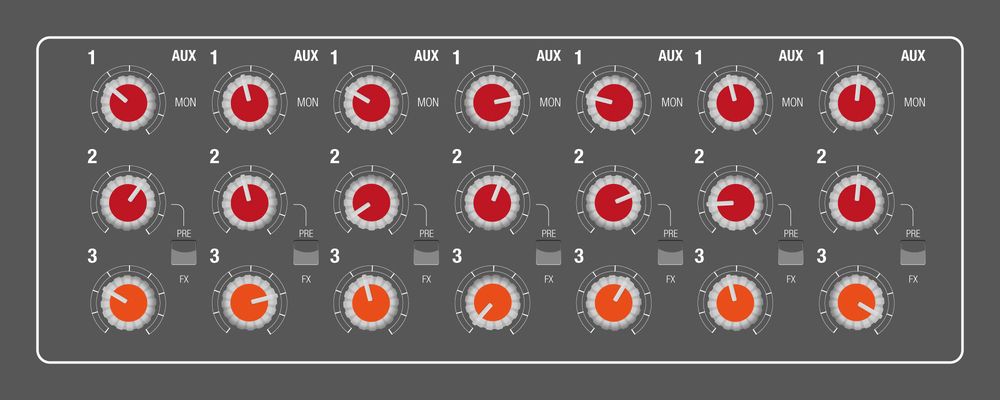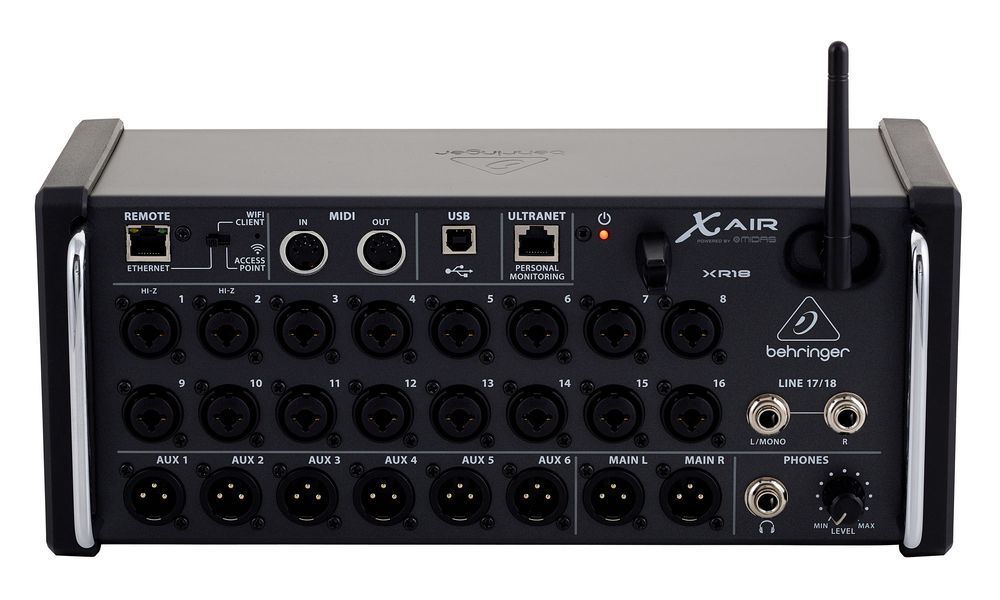2. Technical Background
Whether it's monitoring in a rehearsal space or on a big stage, whether using speakers or headphones, the fundamental principle remains the same. All input signals get mixed together in a mixer and then distributed to various outputs. When a musician wants their own monitor mix, they occupy a monitor output. If the monitor signal needs to be stereo, they occupy two outputs. Monitor outputs are often referred to as aux sends or generally as buses.
Each monitor path has its own control for each input channel. Therefore, one can decide how much of the input signal should be sent to the monitor. The key term here is "PRE-FADER." The volume on the monitor can be set independently of the volume on the main speakers. The position of the channel fader has no effect on the monitor's volume. If the vocals are turned down for the audience, they remain unchanged on the monitor. The point of tap for the send is selectable on some mixers, while on others, it is fixed.

Send section of an analogue mixer with two monitor paths and one effects path. The point of tap for the second bus is selectable (Pre or Post-Fader).
When considering the purchase of a mixer for monitoring, it's crucial to factor in not only the number of inputs but also the required quantity of monitor paths. Analogue mixers are more suited for smaller applications, as with a high number of inputs and outputs, they can quickly become unnecessarily large and expensive. Therefore, these days, it's often worth looking into digital mixers. Here, you get a lot of features in a compact space and often even for a reasonable price.

Affordable and compact digital mixer with up to 6 monitor paths
To delve deeper into the subject, we recommend reading our two Online Guides on "Mixers" and "Digital Mixers."



